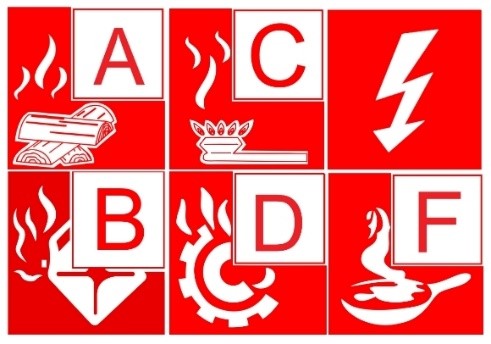SERVICES
Fire Extinguisher Servicing and Fire Extinguisher Maintenance to BS5306
Our Fire Extinguisher Checks
To make sure that your fire extinguisher is safe and well maintained, we will carry out the following checks:- Ensure that nothing is blocking access to the equipment
- Check that it is correctly pressurised
- Ensure the individual parts, for example the nozzle, aren’t being affected by anything
- Make sure the pin and tamper seal are intact
- Check for general wear or neglect
- For extra peace of mind we offer a 24 hour emergency call-out service included in the cost of your contract, and provide replacement extinguishers (replacement charge extra).
Our Engineers
As well as guaranteeing that all of our services are to BS5306 standard, we pride ourselves on employing only BAFE (British Approvals for Fire Equipment) trained engineers. On our visit to service your equipment our engineers will label your extinguishers with the date of service and provide a certificate for insurance company purposes. With a EMS engineer, we guarantee that:- Fire extinguisher installation and service work is undertaken to the highest standards
- All extinguishers carry a British Standard Kitemark
- There is a five-year warranty with all new equipment
- Installation and service work can be undertaken promptly
- You will receive value for your money
- Free survey and quote without obligation
Additional Services
As well as guaranteeing that all of our services are to BS5306 standard, we pride ourselves on employing only BAFE (British Approvals for Fire Equipment) trained engineers. On our visit to service your equipment our engineers will label your extinguishers with the date of service and provide a certificate for insurance company purposes. With a EMS engineer, we guarantee that:- Fire extinguisher installation and service work is undertaken to the highest standards
- All extinguishers carry a British Standard Kitemark
- There is a five-year warranty with all new equipment
- Installation and service work can be undertaken promptly
- You will receive value for your money
- Free survey and quote without obligation
- New extinguishers, recharges, refills and seals
- Relevant signage
- Fire blankets
- Extinguisher storage cabinets
- Brackets

The UK recognises six fire classes under the EN 3 regulations:
- Class A fires involve organic solids such as paper and wood.
- Class B fires involve flammable or combustible liquids, including petrol, grease, and oil.
- Class C fires involve flammable gases.
- Class D fires involve combustible metals.
- Class E fires involve electrical equipment/appliances* (discontinued – see note below)
- Class F fires involve cooking fat and oil.
*Class E has been discontinued, but covered fires involving electrical appliances. This is no longer used on the basis that, when the power supply is turned off, an electrical fire can fall into any of the remaining five categories. However there is an additional feature requiring special testing (35 kV dielectric test per EN 3-7:2004). A powder or CO2 extinguisher will bear an electrical pictogram as standard signifying that it can be used on live electrical fires (given the symbol E). If a water-based extinguisher has passed the 35 kV test it will also bear the same electrical pictogram – however, any water-based extinguisher is only recommended for inadvertent use on electrical fires.
There are many different regulations on fire safety, depending on the type of property you own. The best way to ensure you are following regulations and legislation is to ask an expert. Book a free fire safety check with EMS Security.
Fire extinguishers are inspected and serviced annually, but regular checks should be made to ensure safety. At weekly or monthly intervals, all tamper seals and safety pins should be checked, as well as the pressure gauge, which should remain within the green marking.
Failure to conduct regular fire extinguisher checks can result in your extinguishers no longer working.
DO NOT attempt to fight a fire if you could be putting yourself or other in any type of danger!
ALWAYS – make sure that you raise the alarm and that the Fire Service has been called.
ALWAYS – make sure you have the correct fire extinguisher and make sure that it works before attacking the fire.
ALWAYS – keep low and make sure that you keep an exit behind you.
NEVER – allow the fire to get between you and your exit.
NEVER – attempt to fight a fire if it’s spreading rapidly.
NEVER – continue to fight a fire if there is too much smoke, if you are not getting control of the fire or it continues to grow, leave the area making sure that the doors are closed behind you.
P – Pull the pin
A – Aim the extinguisher hose or horn at the base of the fire
S – Squeeze the trigger handles together
S – Sweep the hose or horn from side to side
Remember: Extinguishers are only for dealing with small fires or fires in the early stage. If the extinguisher runs out, the smoke gets too thick to see clearly or you feel that the
fire is not coming under control.
Fire extinguishers should be placed in a position suitable to its specific needs. However, most extinguishers are placed at exit points to protect escape routes in a fire situation.
Wet chemical extinguishers can be used on A and F class fires.
A class fires are for fires involving wood, plastic and textiles, and F-class fires are for fires involving cooking oils and fats.
A yellow marking can identify wet chemical fire extinguishers.
Foam fire extinguishers can be used on A and B class fires. A-class fires involve materials such as paper, wood and plastic. B-class fires involve flammable liquids.
Foam fire extinguishers can be identified via their cream colour marking.
